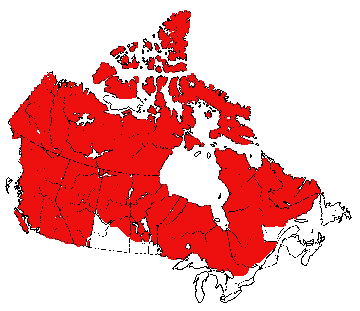
 |
 |
Wolf
Canis lupus

Wolf. Photo:S.D. MacDonald, Canadian Museum of Nature"
For many years the word wolf put fear in the hearts of people. It has been described as savage, evil, diabolical, and ravenous. In actuality this is far from the truth. Wolves are very social animals with a very complex social hierarchy. A pack of wolves will consist of mothers, fathers, pups, aunts, uncles, and grandparents. The entire pack claims responsibility for each pup, should the parents be out hunting or even killed, the pups will be adopted by another mother. Wolves were once numerous throughout Canada, but due to fear of this misunderstood animal, they have been hunted to the point where they have become locally extinct in many areas. Wolves, like coyotes, are cunning hunters using various tactics to capture their prey. Wolves are primarily hunters of large herbivores such as deer and moose, and an adult wolf is able to down an adult ungulate under ideal conditions. Wolves posses a very keen sense of smell and acute hearing. Both of these senses help balance out their poor eyesight which cannot distinguish between objects but can detect movement. Although not very numerous, wolves still enjoy a wide distribution in Canada, occurring in every province. In addition to large herbivores, a wolf's diet consists of small animals such as hares, small rodents, and grouse, and if they are starving they will feed on carrion.

![]() Distribution
of Wolf in Canada
Distribution
of Wolf in Canada
